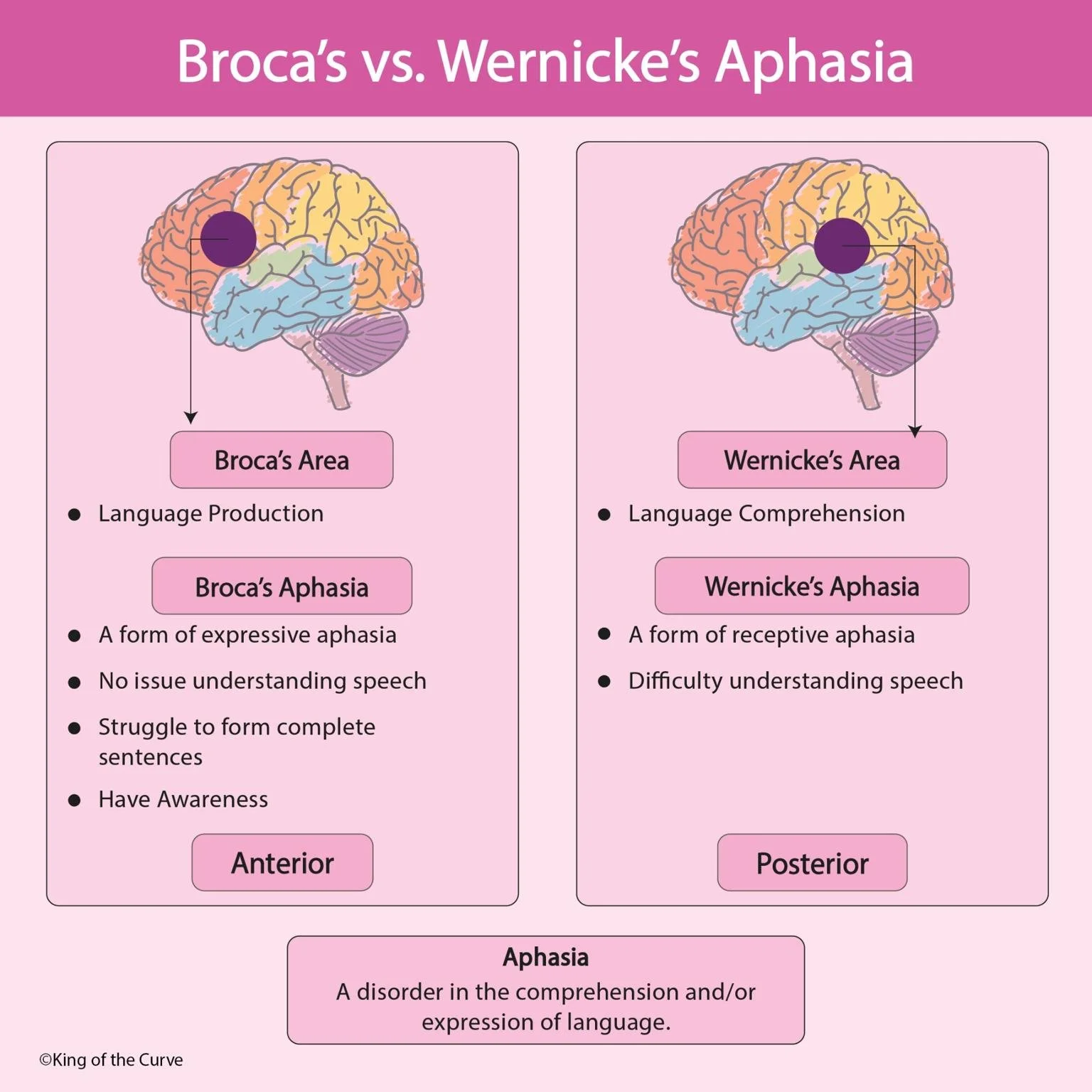🧠 Broca’s vs. Wernicke’s Aphasia: Understanding Language Impairments
Language is one of the most complex and essential functions of the human brain. Two key areas involved in language processing are Broca’s area and Wernicke’s area—each responsible for a different aspect of communication. Damage to either of these areas can result in a type of aphasia, a neurological disorder that impairs language comprehension or production.
🔴 What is Aphasia?
Aphasia is a disorder in the comprehension and/or expression of language. It often occurs after brain injury, stroke, or trauma affecting the language-dominant hemisphere, usually the left hemisphere for most individuals.
🧩 Broca’s Aphasia (Expressive Aphasia)
Location: Broca’s area, located in the anterior (frontal) lobe of the brain.
Function Affected: Language production.
Symptoms:
Difficulty forming complete sentences.
Speech is broken or halted.
Understanding remains intact—individuals can comprehend speech.
Often aware of their communication struggles, leading to frustration.
Example: A person might say “walk... store” instead of “I want to walk to the store,” yet still fully understand what is being said to them.
🟣 Wernicke’s Aphasia (Receptive Aphasia)
Location: Wernicke’s area, found in the posterior (temporal) lobe.
Function Affected: Language comprehension.
Symptoms:
Fluent but nonsensical or irrelevant speech.
Severe difficulty understanding spoken language.
Often unaware of their impaired comprehension and disorganized speech.
Example: A person might produce fluent sentences that don’t make sense, like “The sky runs loud with the tea of happiness.”
🔍 Key Differences at a Glance
| Feature | Broca’s Aphasia | Wernicke’s Aphasia |
|---|---|---|
| Location | Frontal lobe (anterior) | Temporal lobe (posterior) |
| Language Function | Production | Comprehension |
| Comprehension | Preserved | Severely Impaired |
| Speech Fluency | Non-fluent | Fluent but meaningless |
| Awareness | Aware of deficits | 🧠 Why This MattersUnderstanding the distinction between these two forms of aphasia is crucial for:
Broca’s and Wernicke’s areas exemplify the incredible specificity and organization of brain functions. While both result in communication challenges, their presentations and impacts differ significantly—emphasizing the need for tailored therapeutic strategies. Frequently Asked Questions (FAQs)
Previous
Previous
📚 What Is the Best Way to Study for the MCAT in 2025?Next
Next
🎮How to Gamify Your MCAT Prep (Without Wasting Time) |


